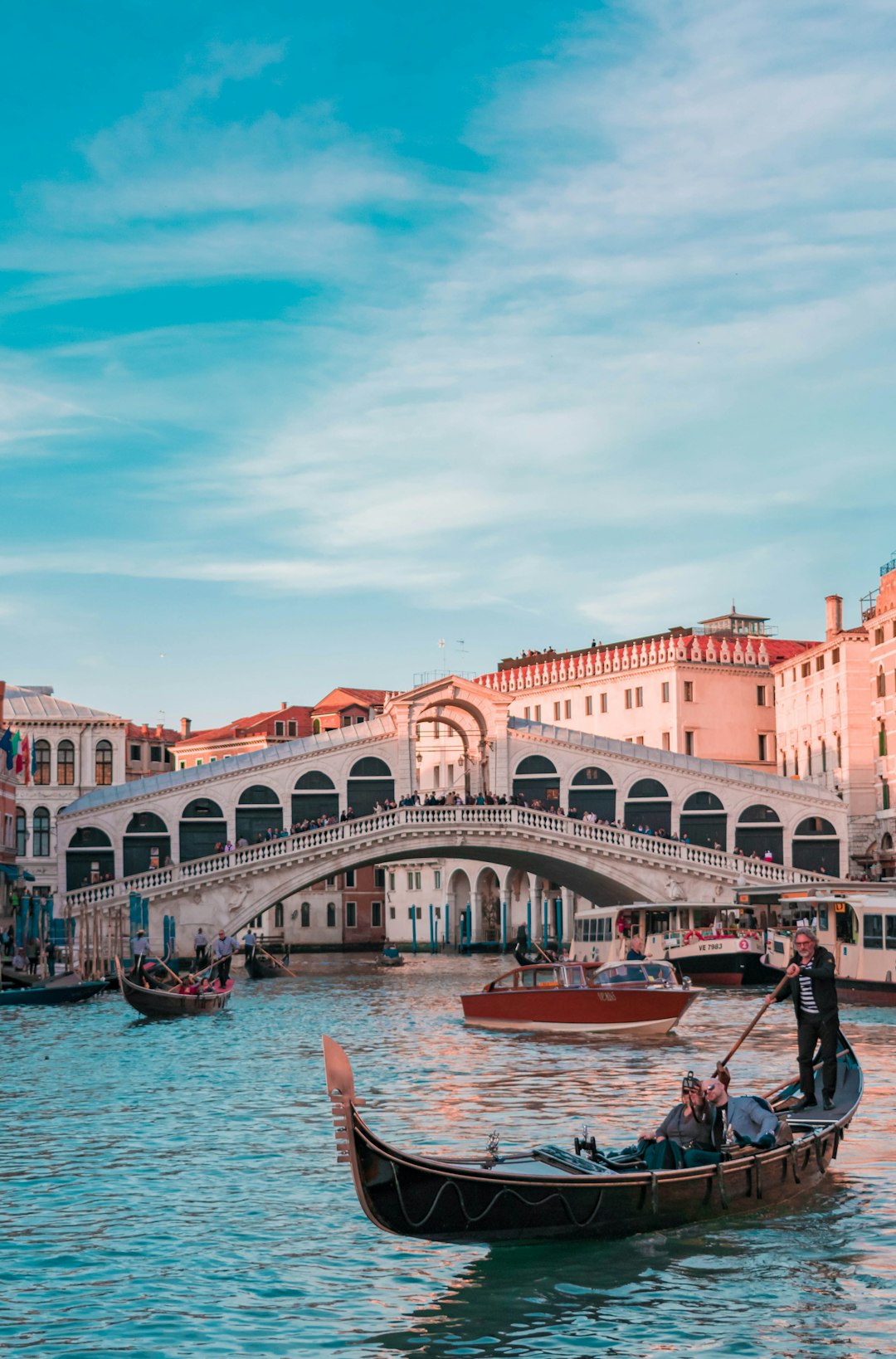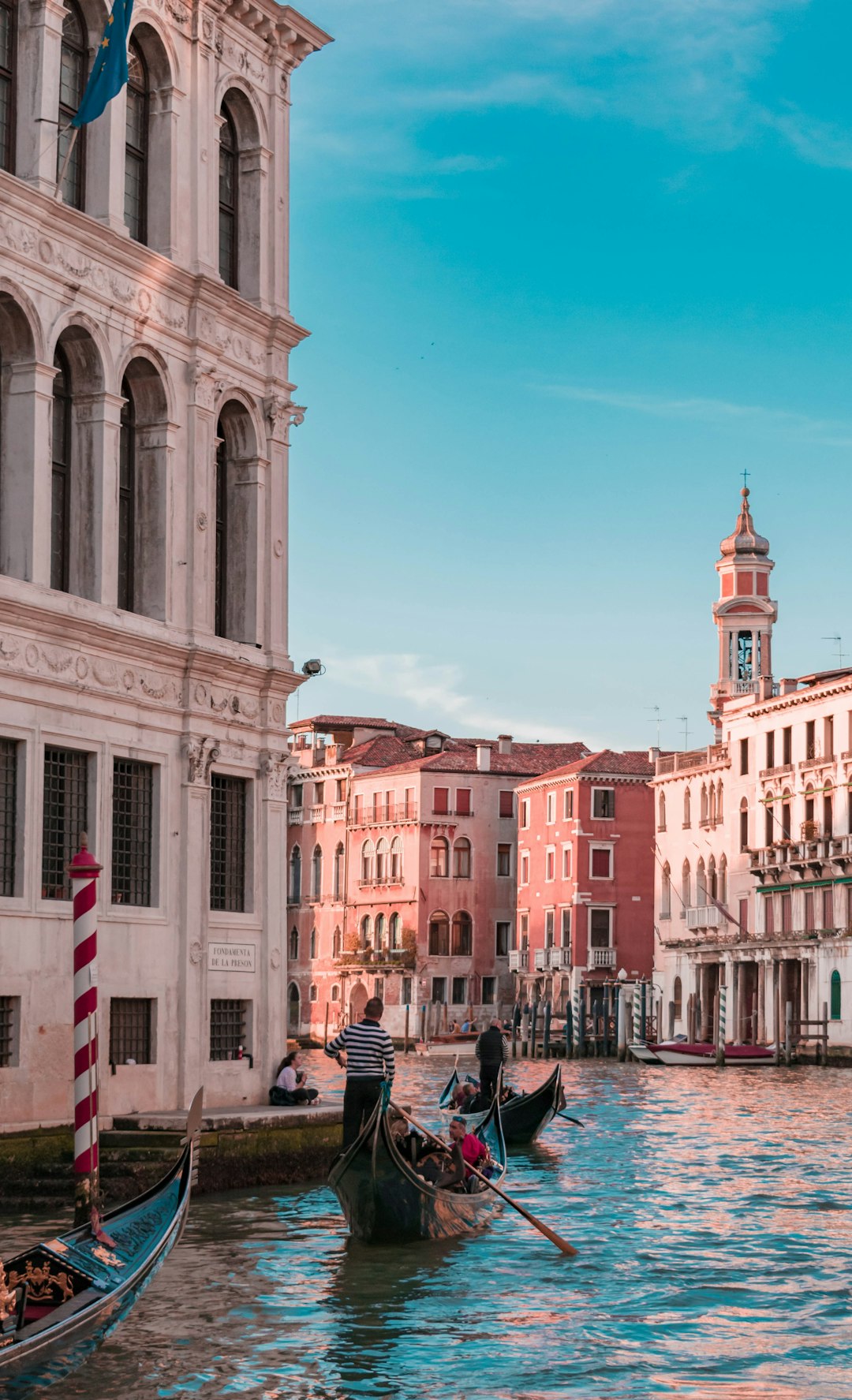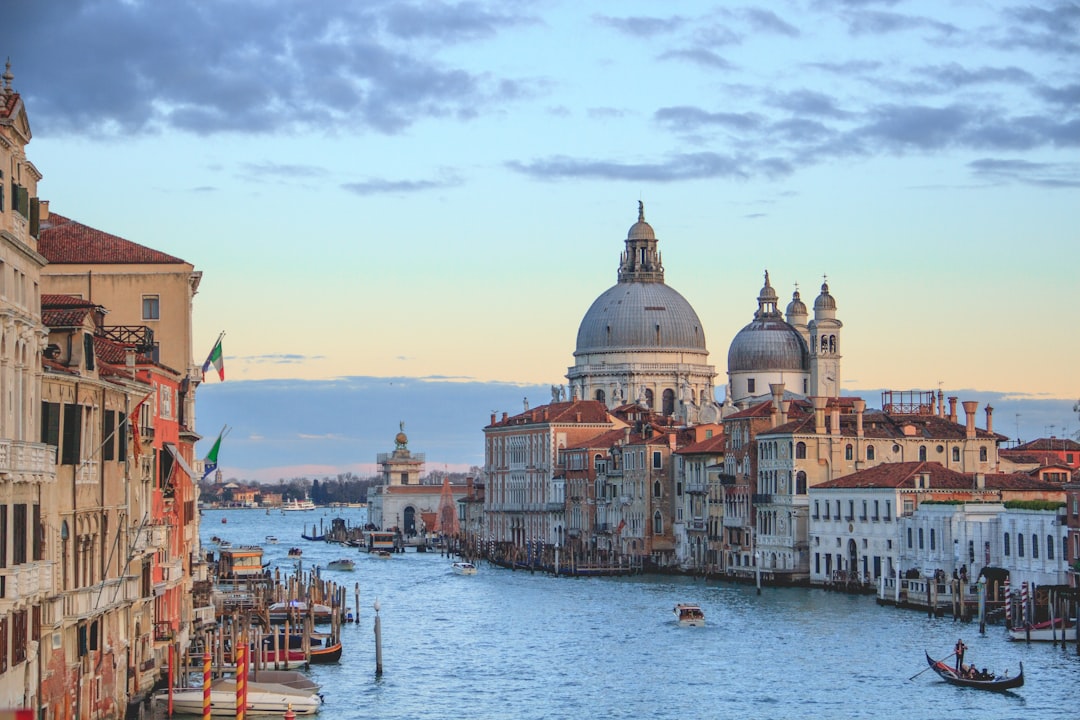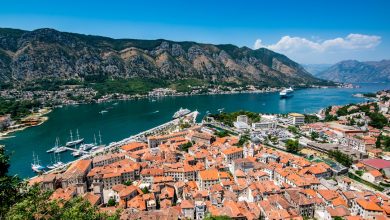
Embarking on a journey to Venice is an immersion in a centuries-old narrative where every alleyway and waterway tells a story. As your ultimate Venice travel guide, this post promises to unlock the splendor of St. Mark’s Basilica, the bustling life by the Rialto Bridge, and the serene glide through canals on a gondola. But Venice’s allure doesn’t end with its postcard-perfect vistas; it beckons with hidden gems in Castello and tantalizing local dishes that await your discovery. Whether you’re marveling at the Venetian Lagoon’s islands or seeking advice for responsible exploration, uncover the wonders of Venice and navigate its charm like a seasoned traveler.
Exploring Venice: An Overview of the City of Canals
Venice, affectionately known as La Serenissima, is a city like no other. Built on more than 100 small islands in the Adriatic Sea, it stands today as a mesmerizing testament to the ingenuity of its early inhabitants. As you plan your trip, let this Venice Travel Guide take you through the essential experiences that make exploring Venice a unique adventure.
Characterized by its winding canals, intricate architecture, and rich historical tapestry, Venice is a city that seems to float magically on the waters. The absence of cars and the sound of water lapping against the foundations of centuries-old buildings create an atmosphere of tranquil beauty. As you set out on your journey:
- Marvel at the interplay of light on water as you walk along the canals, where picturesque reflections tell stories of a bygone era.
- Embrace the melodic rhythm of oars dipping into the canal as gondoliers navigate their traditional crafts with artful precision—a symphony of movement that beckons you to explore further.
- Explore the vibrant piazzas bustling with life, where locals and tourists alike mingle among historic cafés and shops.
Navigating through Venice is an experience unto itself. The main waterway, the Grand Canal, serves as the city’s pulsating artery, guiding travelers and Venetians from one stunning vista to another. Whether you’re gliding beneath the arched bridges that span the waterways or discovering the delicate charm of the city’s narrow alleyways, you are partaking in a centuries-old narrative.
For the consummate explorer, this Venice Travel Guide suggests indulging in the rich tapestry of cultural heritage that Venice offers. Every corner of the city reveals layers of history, art, and tradition that continue to enchant visitors from around the world. The essence of Venice lies not just in its iconic landmarks but also in its ability to merge the past and present into an unforgettable experience. So take the time to wander, to gaze, and to revel in the timeless splendor of the City of Canals.

The Grandeur of St. Mark’s Basilica
As a central highlight in any Venice Travel Guide, the majestic St. Mark’s Basilica stands out as a testament to the city’s deep-rooted history and architectural grandeur. Nestled in the Piazza San Marco, this Byzantine masterpiece captivates visitors with its opulent design and artistry.
In exploring the basilica, one is immediately struck by its five iconic domes, each lavishly adorned with gold-backed mosaic work, illustrating biblically themed art and the intricate craftsmanship of Venetian artisans. The basilica not only serves as a place of worship but also as a symbol of Venice’s former wealth and power.
Here are some aspects of the basilica that should not be missed:
- Magnificent Facade: The exterior is a blend of Gothic and Byzantine styles, with a profusion of arches, marble and sculptures that almost seem to vie for your attention.
- Pala d’Oro: Inside, the altarpiece known as Pala d’Oro, encrusted with thousands of precious stones, is an astonishing work of art and a highlight for many visitors.
- Tetrarchs statue: Don’t overlook the unique corner outside where the Statues of the Tetrarchs, symbols of unity from the Roman Empire, subtly link Venice’s past to its present.
For an optimal visit, ensure you allocate ample time to absorb the basilica’s beauty without rush. Additionally, consider visiting during the off-peak hours to dodge the crowds—usually in the early morning or late afternoon.
In any comprehensive Venice Travel Guide, a stop at St. Mark’s Basilica is not just recommended; it is essential. Its grandeur speaks volumes, serving as both a historical archive and an architectural wonder that leaves a lasting impression on all who walk through its venerable doors.
Discovering the Rialto Bridge and Its Surrounding Market
A key chapter in any Venice Travel Guide is the iconic Rialto Bridge, one of Venice’s oldest and most recognizable landmarks. Straddling the Grand Canal, the Rialto Bridge isn’t just a magnificent example of Renaissance architecture; it’s also a bustling hub of local commerce and activity.
Firstly, let’s appreciate the bridge itself. Constructed from Istrian stone, the Rialto’s impressive arch design has stood the test of time since its completion in 1591. It’s a picturesque spot for photos, especially at sunrise or sunset when the warm hues of the sky reflect on the waters below.
But there’s more to this area than just the bridge. The Rialto Market, just steps away, is a feast for the senses. Here’s what to look for:
- Fresh Produce: Vibrant fruits and vegetables, direct from the Venetian lagoon’s fertile islands, beckon with their freshness.
- Seafood Delights: Venice is synonymous with maritime culture, and the Rialto fish market offers the day’s catch, ranging from Adriatic favorites to exotic sea creatures.
- Venetian Crafts: The market also hosts stalls featuring artisanal goods, giving visitors a chance to take home a piece of Venetian craftsmanship.
When navigating this bustling area, it’s best to arrive early. The market is typically open from Tuesday to Saturday, starting before the dawn breaks and wrapping up shortly after lunchtime. This is the ideal time to witness local life, as Venetians haggle and banter over groceries.
Incorporating a visit to the Rialto Bridge and its surrounding market into your Venice travel itinerary affords a glimpse into the city’s commercial heart. Here, amidst the calls of traders and the echo of footsteps on ancient stone, you’ll find the living pulse of Venice as it has been for centuries. Remember, your Venice Travel Guide isn’t complete without soaking up the authentic atmosphere that the Rialto area generously offers.
A Gondola Ride Through Venice’s Picturesque Waterways
No Venice travel guide would be complete without mentioning the quintessential Venetian experience: a gondola ride. Gliding through the serene waterways, you can behold the city from a unique vantage point that truly captures the essence of Venice’s romantic allure.
Why Take a Gondola Ride?
- Intimate Views: Gondolas allow access to secluded canals that larger boats can’t navigate.
- Cultural Icon: Experience a timeless tradition symbolizing the history of Venice.
- Personalized Routes: Gondoliers can often customize the route to showcase hidden treasures of the city.
What to Expect
A traditional gondola is a handcrafted boat, steered by a skillful gondolier who navigates the intricate waterways. While on board:
- Sit back and relax as the expert gondolier oars you through both famous and lesser-known canals.
- Listen to tales and stories about Venice’s history and landmarks, often shared by the gondolier.
- Request a serenade, if you fancy music to accompany your journey (usually at an additional cost).
Cost Considerations
Be mindful that gondola rides come at a premium, with prices varying depending on the duration and route. A typical 30-minute ride could cost around 80 euros, with prices increasing in the evening.
Insider Tips
- Share a Gondola: For a more budget-friendly ride, consider sharing the gondola with other tourists.
- Negotiate Duration: Discuss the length and route of your trip with the gondolier beforehand to avoid surprises.
- Time of Day: For a less crowded experience, opt for a morning or late evening ride.
Embarking on a gondola ride is an enchanting way to connect with Venice’s storied past and present. While it might seem touristy, it’s an activity that resonates with the heart of Venetian culture and should be embraced with the same fondness as any historical landmark in this brilliant city. Incorporate this unforgettable experience into your Venice travel guide plans, and treasure the memories of floating through the archetypal canals of this floating city.

Hidden Corners: The Lesser-Known Secrets of Castello
While many travelers flock to the main attractions of Venice, those in search of a more authentic experience will find the Castello district a treasure trove of hidden gems. As an integral part of any Venice Travel Guide, we delve into the quieter, more local side of the city, away from the hustle and bustle.
Firstly, let’s explore the atmospheric squares of Castello:
- Campo Santa Maria Formosa: A charming square with a mix of architectural styles and local life.
- Campo Bandiera e Moro (or Bragora): Delight in the peaceful ambiance and historic churches.
Within Castello, you can uncover historical marvels that are less frequented:
- Arsenale di Venezia: Once the heart of Venice’s naval power, this complex offers a glimpse into the city’s military past.
- Scuola di San Giorgio degli Schiavoni: Housing impressive Renaissance artwork, it’s an art enthusiast’s paradise.
For those keen on artisanal crafts, Castello does not disappoint:
- Via Garibaldi: A street lined with artisan shops, perfect for finding unique souvenirs and witnessing the crafting process.
Lastly, include the peaceful gardens that break the urban feel:
- Giardini della Biennale: These expansive gardens are a breath of fresh air and showcase international art installations during the Biennale.
Castello offers a serene escape from the more popular routes, allowing travelers to immerse themselves in the daily rhythms of Venetian life. Remember that a true Venice Travel Guide isn’t complete without stepping off the beaten track to discover places like these, fostering a deeper connection with the city’s heritage and culture.
Venetian Gastronomy: Where to Find Authentic Local Cuisine
When traversing the enchanting city of Venice, indulging in its authentic local cuisine is as vital as meandering through its labyrinth of canals. This Venice Travel Guide wouldn’t be complete without a peek into the culinary delights that this floating city has to offer.
First and foremost, to truly embrace the heart of Venetian gastronomy, one must venture beyond the tourist-laden eateries and delve into eateries favored by locals. Here’s where you should aim your taste buds:
- Traditional Bacari: For a genuine taste of Venetian tapas or “cicchetti”, seek out a bacaro. These small bars offer a convivial atmosphere alongside a selection of bite-sized morsels, such as polpette (meatballs) and sarde in saor (sweet and sour sardines).
- Osterias and Trattorias: To enjoy a sit-down meal, look for family-run osterias and trattorias, which stand as bastions of regional cuisine. Here, pasta reigns supreme; dishes like bigoli in salsa (thick spaghetti with anchovy sauce) and risi e bisi (rice and peas) showcase simple ingredients elevated to culinary art.
- Rialto Market: For a pleasingly interactive food experience, head to the Rialto Market where the city’s freshest produce and seafood are on full display. Many local restaurants source their ingredients here, ensuring a meal teeming with freshness.
In order to assist you in your culinary quest, consider this comparison:
| Dining Option | Experience | Typical Dishes |
|---|---|---|
| Bacaro | Casual/Stand-up | Cicchetti, Small Seafood Plates |
| Osteria/Trattoria | Sit-down | Pasta Dishes, Local Seafood, Traditional Stews |
| Rialto Market | Interactive/Shop | Fresh Ingredients, Seasonal Specialties |
Your Venice Travel Guide would be amiss if it didn’t stress the importance of pairing these sumptuous dishes with a glass of local wine, such as a crisp Prosecco or a robust Valpolicella. Finally, embrace the Venetian way by allowing meals to unfold leisurely over lively conversation and picturesque views, fully immersing yourself in the Venetian dining experience.
The Enigmatic Charm of the Venetian Lagoon Islands
Discovering the Venetian Lagoon Islands is akin to unveiling a layer of mystery and serenity that stands in stark contrast to the buzzing streets of Venice. As part of an essential Venice Travel Guide, no visit is complete without delving into these less-trodden paths that speak volumes of Venice’s extensive heritage.
Murano: Known globally for its exquisite glassmaking, Murano isn’t just a place to observe artisans at work but also to understand the island’s rich history.
- Glass Museums: Witness the evolution of glass art in one of Murano’s detailed museums.
- Furnace Tours: Observe the mesmerizing skill of glassblowing during a visit to a functioning furnace.
Burano: A feast for the eyes, Burano stands out with its rainbow-hued houses. It’s a photographer’s paradise, but also home to intricately designed Burano lace.
- Lace Museum: Explore the finesse of this dying art at the dedicated museum.
- Local Shops: Browse through a myriad of shops selling authentic, hand-made lace products.
Torcello: For those seeking tranquility and historic insight, Torcello is an important mention in any Venice Travel Guide. It hosts ancient structures like the Cathedral of Santa Maria Assunta, famous for its stunning mosaics.
San Michele: Often missed by tourists, this island serves as Venice’s cemetery and provides a unique calm, introspective space adorned with impressive sculptures and mausoleums.
In this Venice Travel Guide section, we can’t emphasize enough the serenity and the change of pace these islands offer amidst their enigmatic charm. Venture beyond the expected and the rewards of cultural richness and historic depth will be bountiful. Remember, while the main island gathers most of the attention, these outlying islands make Venice the singularly fascinating destination it is known to be.

Tips for Sustainable Tourism in Venice
As Venice grapples with the challenges of over-tourism, practicing sustainable tourism is key to preserving its delicate urban environment and rich cultural heritage. Here are several tips to ensure your visit aligns with principles of responsibility and respect for this floating city:
- Support Local Businesses: Opt for accommodations, eateries, and shops that are locally owned. Doing so circulates your tourist dollars within the community and contributes to the livelihoods of Venetian residents.
- Travel During Off-Peak Periods: Venice often swells with tourists during peak seasons. Visiting in the shoulder months (early spring or late autumn), can help reduce the strain on local resources and you’ll likely enjoy a more authentic experience of city life.
- Reduce Waste: Make an effort to minimize your waste footprint. Bring a reusable water bottle—Venice’s tap water is drinkable and there are numerous public fountains where you can refill. Also, avoid disposable items like plastic bags by carrying a reusable tote for any purchases.
- Explore By Foot: While gondolas and vaporettos are iconic, they can contribute to the congestion of Venice’s waterways. Walking is an excellent way to discover hidden alleys and quiet squares, reducing your carbon footprint and uncovering the city’s hidden gems.
- Respect Local Culture: Venice is not just a tourist destination; it’s a living city with its own customs and traditions. Show respect by dressing modestly, especially when visiting religious sites, and by observing local etiquette.
By integrating these practices into your itinerary, your Venice travel guide experience becomes not only enriching for you but also beneficial for the enduring splendor of Venice. Remember, responsible travel is about creating positive impacts and memories that respect the destination’s environment, culture, and people.
Navigating Venice: Practical Advice for First-Time Visitors
When planning your trip with a Venice Travel Guide, understanding how to navigate this unique city can make all the difference. Venice is not your typical city with roads and cars; its pathways are waterways, and boats are the kings of transportation. Here’s some practical advice for first-time visitors to get around smoothly and enjoy every moment in Venice:
- Plan Ahead with Vaporettos: These water buses are the lifeline of Venice, connecting various neighborhoods through the canals. Buy a travel card for unlimited trips over a set number of days to save money, and download a Vaporetto map on your smartphone.
- Walk with Purpose: Most of Venice is accessible by foot. Invest in a good map or a GPS-enabled device to navigate the labyrinth of alleys and bridges. Key landmarks are well signposted, but there’s charm in getting a little lost in the quieter canals and discovering hidden piazzas.
- Gondola or Traghetto?: While gondolas are iconic, they can be expensive for a full ride. For a taste of the experience without the hefty price tag, take a traghetto—these gondolas cross the Grand Canal at various points and cost just a few euros.
- Night Navigation: Venice becomes even more magical at night, but also less crowded. Use this time to explore the illuminated squares and streets. Public transport runs less frequently, so check the schedule ahead of time.
- Mind the Cruise Ships: If your Venice Travel Guide includes sights near the cruise port, be mindful of the timing. When cruise ships dock, nearby areas can get crowded. Plan your visits to popular spots like Saint Mark’s Square early in the morning or later in the evening to avoid the surge.
Adjusting to the pace and style of navigation here is part of the fun. Embrace the novelty, and soon, you’ll be moving through the canals and alleys like a seasoned traveler, making your Venice Travel Guide as much about the journey as the destinations themselves.



